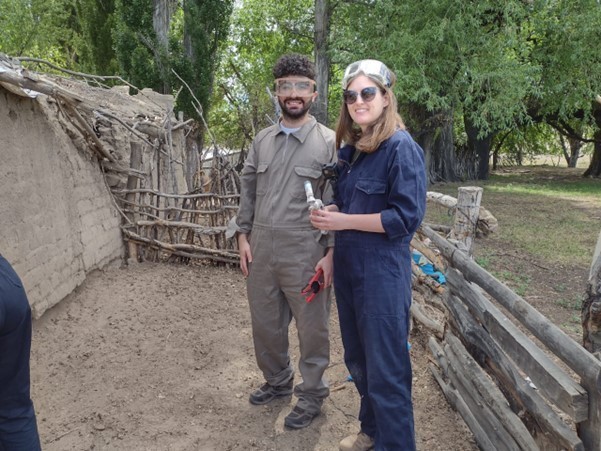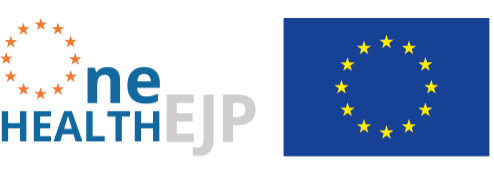El Cóndor, Río Negro, Argentina
Viale Regina Elena 299, Rome, Lazio, Italy
Daphne Jackson Road, Guildford, England, United Kingdom

The Project #MACE
| Start: | January 2020 |
| Duration: | 3 years |
| Domain: | Foodborne Zoonoses |
| Members: | University of Surrey- UK, ISS- Italy |
| Contact: | Dr Joaquin M. Prada |
MACE: Mathematical models and economic evaluation for cystic echinococcosis control and elimination
Cystic echinococcosis (CE) is a zoonotic parasitic disease of significant public health concern in many parts of the world. For example, over 5,000 new CE cases are reported in South America every year and a recent study has estimated that more than 150,000 people in Bulgaria, Romania and Turkey might be affected by CE. The burden, extending to include economic impacts, is mostly felt in subsistence livestock keepers and other marginalised rural and peri-urban populations where other health competing threats persist. Under-reporting of the condition is large and the evidence to inform efficient surveillance and control approaches scarce. The large range of surveillance and control measures across all hosts, and their heterogeneous application across geographies further complicates the aggregation and comparison of evidence to assess the performance of control programmes.
This project will inform the most efficient portfolio of surveillance options and interventions towards CE control and elimination, accounting for the varying risks, disease control capacities, and risk preferences across geographies. The project is novel in the joint application of mathematical modelling and economic evaluation at fine spatial resolutions, and in the active elicitation of risk attitudes towards CE and related control measures to formally model their impact on the uptake of interventions and their efficacy.
We target highly CE endemic areas in the world: South America, where CE control programmes have been operating for decades and the evidence is best to inform our models. Recently, state-of-the-art analyses have been applied to integrate multiple surveillance sources (e.g., sampling of dogs, passive surveillance, and ultrasound screening on children) in Rio Negro (Argentina) to exhaustively map CE risk. The logical next step, as suggested here, is the integration of the existing risk maps with economic evaluations of the portfolio of interventions (e.g., sheep vaccination) adjusted for risks preferences (e.g. risk aversion, loss aversion). The other geographical targets are Italy, where CE prevalence is endemic in the south, and Iran where CE is prevalent in rural areas. The heterogenous distribution of the disease in these countries will be studied using active surveillance data. This data will be used to feed the model developed with high prevalence and low prevalence scenarios to capture the disease in the landscape. As the model contains the economic evaluation component, we will be able to generate multiple disease control scenarios (updated with local costs). Given that risk preferences may be context-specific, we will also elicit risk preferences from stakeholders. The methods developed as part of the project has been used in the context of other diseases.

Our results will inform the ongoing regional control and elimination plan coordinated by the Pan American Health Organization and the 2030 WHO roadmap to end the neglect of NTDs. This plan set up a number of strategic outcomes that our models will be able to operationalize and optimise. Our results will also contribute additional insight into the true magnitude of CE in Europe and the Middle east.
Project Assets
Oral presentation at British Association for Veterinary Parasitology Annual Meeting (BAVP2022), Belfast, UK. 8-9th September 2022.
Prize winning oral presentation at Research celebration event, University of Surrey, UK. 16th June 2022.
Poster presentation at 4th International Conference on Animal Health Surveillance (ICAHS4), Copenhagen Denmark. 3-5th May 2022.
Poster presentation, 3 minute thesis presentation & roundtable discussion at OHEJP ASM 2022, Orvieto, Italy. 11-13th April 2022.
Poster presentation at British Society for Parasitology (BSP) Annual Meeting, York, UK. 21-25th March 2022.
Poster presentation at British Society for Parasitology (BSP) Annual Meeting, virtual. 21-25th June 2021.
Poster presentation, 3 minute thesis presentation & quiz organisation at OHEJP ASM 2021, hybrid event. 9-10th June 2021.
Oral presentation at University of Surrey Symposium, UK. 7-8th September 2020.
Poster presentation & 3 minute thesis presentation at OHEJP ASM 2020, online. 27-29th May 2020.
MACE Final PhD Thesis Report (2023)
D6.1- Review of surveillance and control tools for CE
Entezami, M., Nocerino, M., Widdicombe, J., Bosco, A., Cringoli, G., Casulli. A., Lo Iacono, G., Rindaldi, L., & Prada, J. M. (2022). The spatial distribution of cystic echinococcosis in Italian ruminant farms from routine surveillance data. Frontiers in Tropical Diseases. 3, 1034572. DOI: https://doi.org/10.3389/fitd.2022.1034572
Lise, M. L. Z., Widdicombe, J., Lise, C. R. Z., de Oliveira S. V., de Caldas E. P., Entezami, M., Prada, J. M., Ghiotti, N., Rodrigues e Silva, R., Vizcaychipi, K. A., Del Rio Vilas, V. (2022). Records of Human Deaths from Echinococcosis in Brazil, 1995–2016. Veterinary Sciences. 9(8), 436. DOI: https://doi.org/10.3390/vetsci9080436
Widdicombe, J., Basáñez, M. G., Entezami, M., Jackson, D., Larrieu, E. & Prada, J. M. (2022). The economic evaluation of Cystic echinococcosis control strategies focused on zoonotic hosts: A scoping review. PLOS Neglected Tropical Diseases. 16(7), e0010568. DOI: https://doi.org/10.1371/journal.pntd.0010568

Mahbod Entezami
Update
Mahbod won a prize for best 5-minute oral presentation at the University of Surrey School of Veterinary Medicine research celebration event, 9th September 2020.


